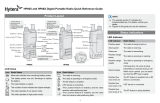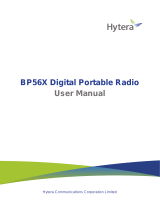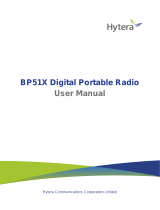
9
6. Supplementary Features
Feature Description Operation
Power Level
The feature allows you to set the TX power
level of the radio to High or Low. High level
strengthens the TX signal. Low level saves
the battery power.
Press the preprogrammed Power Level Adjust
key to adjust the power level.
Scan
The feature allows you to listen to activities
on other channels, keeping track of your
group members. With the feature enabled,
the radio searches the scan list preset for the
current channel. After
on a channel, the radio stays on it.
Press the preprogrammed Scan key to enable or
disable the feature. If a channel is configured with
Scan, the radio automatically scans when
switching to the channel.
Emergency
The feature allows you to ask for help from
your companion or the control center in case
of emergency. With the highest priority, you
can initiate an emergency call whenever
your radio is transmitting or receiving.
Press the preprogrammed Emergency On key to
initiate an emergency call to the preset contact.
With the Alarm w/Call to Follow feature enabled,
you can talk in an emergency call by speaking into
the microphone without pressing the PTT key.
VOX
The feature allows you to
without pressing and holding the PTT key.
The radio automatically transmits voice
when the volume reaches the preset level.
To set the desired sensitivity of the
microphone transmission,
dealer to configure the VOX Gain Level.
You can use the feature with
VOX. To enable the VOX feature, do as follows:
Toggle the PTT/VOX
earpiece to VOX, and insert the earpiece into
radio.
Press the preprogrammed VOX
radio.
If a channel is configured with
automatically enables the feature when switching
to the channel.
To disable the VOX feature,
switch to PTT.
Talk Around The feature allows you to continue Press the preprogrammed Talk Around




























